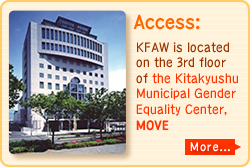Sketches of the Johannesburg Summit
The World Summit on Sustainable Development (WSSD, the Johannesburg Summit) was held in Johannesburg, Republic of South Africa, from August 26 to September 4, 2002, with the participation of about 20,000 people in government delegations and NGOs from 191 countries and regions throughout the world.
Republic of South Africa and Johannesburg
Most people associate Africa with deserts and boiling hot weather. However, South Africa, which is located in the Southern Hemisphere, has a generally temperate climate. August and September are similar to early spring in Japan. South Africa is three times the size of Japan, and has a population of about 43 million. Indigenous people, including the Xhosa, Zulu, Basotho, and Swazi account for 70% and Europeans account for 10%. There are also people of mixed racial origins called “ecolored” and Indians.
The Capital of South Africa, where the administrative organ is located, is Pretoria. The legislative organ is located in Cape Town, and the judiciary organ in Bloemfontein. Johannesburg is the center of economic activity. The city is proud of its modern panorama of skyscrapers and the freeway that encircles it.
Johannesburg is also known for its high crime rate. Travel guidebooks also stress the need for care while staying there. During the Summit, numerous police persons (apparently including student part-timers) were stationed around the venues to maintain a high level of security.
Summit venues
Meetings and events related to the Johannesburg Summit were held mainly at three areas within 20 to 40 minutes’ drive of each other: Sandton, Nazrec, and Ubuntu.
The Sandton Convention Centre, located in the northern part of Johannesburg, was the venue for Summit meetings. Official UN meetings, unofficial meetings, delegates’ meetings, and Caucus meetings were held here. Only government delegates, members of intergovernmental organizations accredited by the UN, and others registered in advance through NGOs accredited by the UN were permitted to enter the Sandton Convention Centre. Since KFAW was qualified in 2002 to participate without preconditions in United Nations Economic and Social Council meetings and its related events as an observer, we were welcome to enter the Centre.
At Nazrec, NGOs held the Global People’s Forum in parallel with official summit meetings and events. NGOs in South Africa and other nations throughout the world held a wide range of meetings, events, exhibitions, concerts, etc. Nazrec was crowded with many participants every day.
There were also street stalls where native women served local food. We noticed long queues every day.
Ubuntu was the base area for operating shuttle bus services between Sandton, Nazrec, and major hotels. At Ubuntu, an exhibition pavilion was set up which also featured the House of Japan Exhibition, sponsored by the Japanese government. August 29th was designated as Japan Day, and seminars were held at the House of Japan. Mayor Koichi Sueyoshi of Kitakyushu also participated in one of the seminars to talk about Kitakyushu’s international cooperation initiatives and how the city has overcome pollution.
ID cards
The first thing participants at the Summit had to do when they arrived at Johannesburg was to apply for an ID card. Separate applications were needed to participate in UN meetings at the Sandton Convention Centre and the Global People’s Forum at Nazrec, since the sponsors were different. In order to obtain an ID card, we first had to apply for each venue in advance via the Internet. We then received written acceptance of application from the United Nations or the Global People’s Forum. At Johannesburg, we needed to submit this document of acceptance and our ID (in our case, our passports) for official registration. An ID card with a photo was issued on the spot, which we were instructed to hang around our neck. For ID cards issued by the UN, different colors were used for classification: Light blue for government delegations, green for media, brown for NGO members, red for security persons, etc.
We also had to obtain separate day passes called “secondary pass”. These were often distributed on the previous day on a first-come, first-served basis. A long queue always formed at distribution time.
Women’s Action Tent
A huge tent called the “Women’s Action Tent” was set up at the Nazrec venue from August 27th to 30th. During this period, events related to women were held and arts and crafts made by women were put on sale in the tent. On August 30th, the Secretary-General of the WSSD, Nitin Desai, and the Vice President of the Republic of South Africa, Thabo Mbeki, were invited to the closing ceremony. All the participants, with the lead of women from African countries, spiritedly sang and danced together. The event ended in a very enthusiastic atmosphere.
Volunteers
Volunteers in black uniforms with colorful patterns were helpful at the airport, the Sandton Convention Centre, Nazrec, etc. They were very friendly, and tried to help us as soon as they noticed we seemed to be lost.
Security
At the Sandton Convention Centre, Nazrec, and Ubuntu, our ID cards were checked and our luggage was X-rayed. Although this security operation gradually became more efficient, NGOs, in particular, were kept waiting for 1 to 2 hours on the second day before we were allowed to go in.


